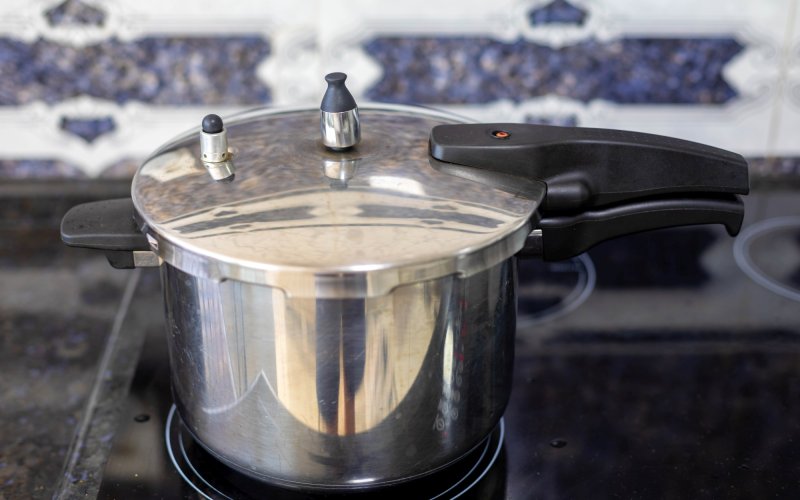Physics in the kitchen
Everyone knows that water boils at 100 °C. That’s true – but only at the air pressure we have “at sea level.” If the pressure is increased, water doesn’t start boiling at 100 °C but at a higher temperature. And that’s exactly what a pressure cooker does: it traps steam that cannot escape, and this raises the pressure inside the pot.
- In a regular pot, water boils at 100 °C.
- In a pot with a well-fitted lid, the pressure rises slightly, and water boils at about 101—102 °C.
- In a pressure cooker, the pressure rises to about 1.5—2 times atmospheric pressure → water boils at 115—120 °C.
So inside a pressure cooker, food is not cooking in “normally hot” water, but in an environment that is 15—20 °C hotter than in an ordinary pot.
What this means for cooking meat
Cooking meat is not just about water temperature — the real process is breaking down proteins, collagen, and other substances that make meat tough. These processes accelerate as the temperature rises.
Example, 1 kg of beef for stew:
- In a regular pot: about 120 minutes → meat simmers at 100 °C.
- In a pot with a lid: about 100—110 minutes → only a small improvement.
- In a pressure cooker: 40—50 minutes → thanks to 115—120 °C, the meat breaks down 2—3 times faster.
With legumes the difference is even greater: lentils that normally take nearly an hour are done in 15 minutes in a pressure cooker.
Why the pressure cooker is safe
Some people remember old stories about “exploding” pressure cookers. But modern models have two or three safety valves. These release steam as soon as the pressure exceeds the set value.
To imagine the forces involved: a lid 20 cm in diameter under an extra 1 bar (100 kPa) of pressure is held down by a force of more than 300 kg. That’s why strong construction and a safety valve are absolutely essential.
Comparison at a glance
| Type of pot | Boiling temperature of water | Cooking time for 1 kg beef | Energy use |
|---|---|---|---|
| Open pot | 100 °C | ~ 120 min | high (steam escapes) |
| Pot with lid | 101—102 °C | ~ 100—110 min | medium |
| Pressure cooker | 115—120 °C | ~ 40—50 min | low |
Conclusion
A pressure cooker is not magic, but smart physics. Trap the steam, raise the pressure, and the boiling point of water shifts upward. Water and steam inside reach higher temperatures, which dramatically speeds up the breakdown of food components.
The result? Tender meat, quick-cooked beans, and savings of both energy and time.
A neat everyday example of how the physics we learn at school brings real benefits right in our kitchens.
Want to ask something?
Send us an e-mail with the subject “Physics mysteries” to the address:
We can't wait to tackle your interesting questions!





